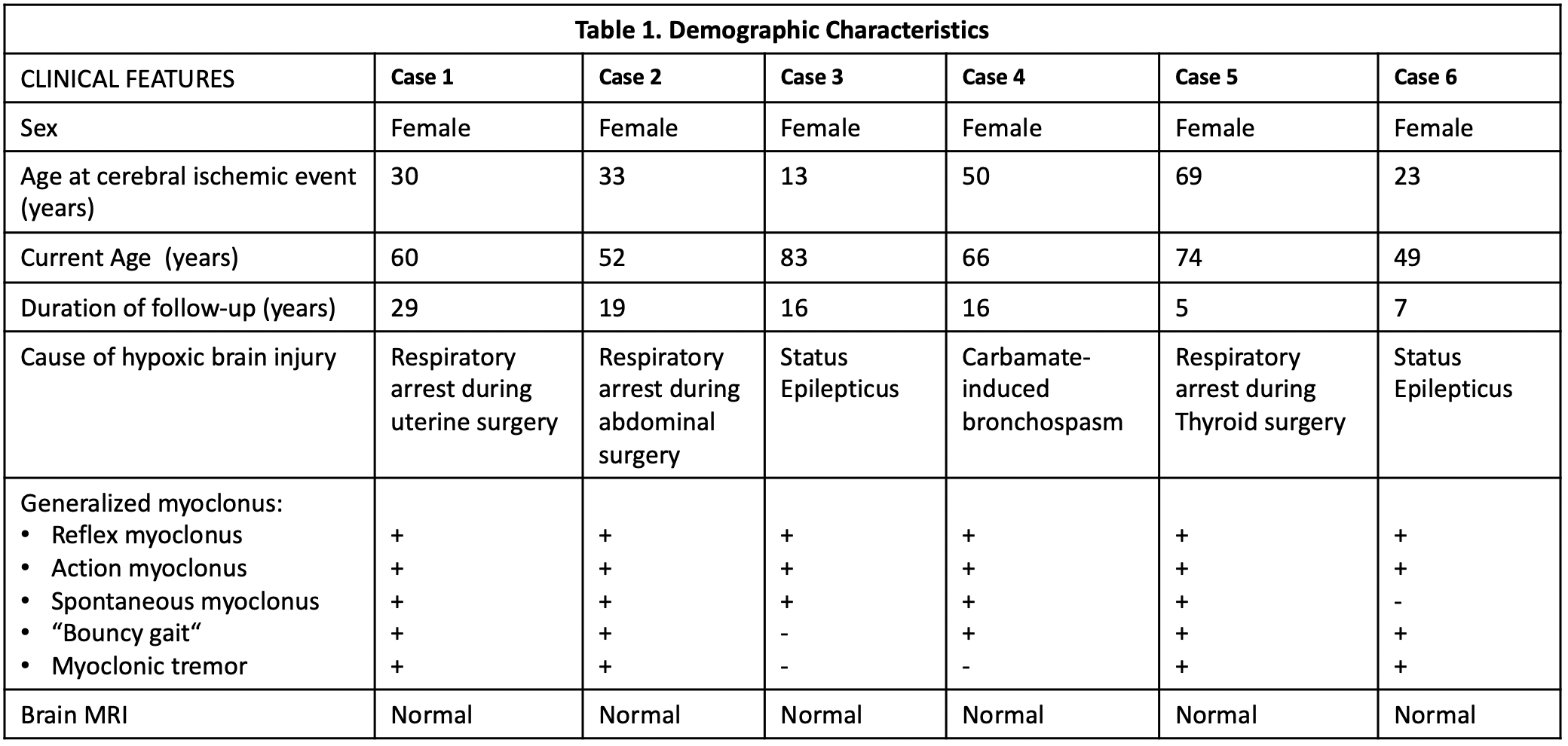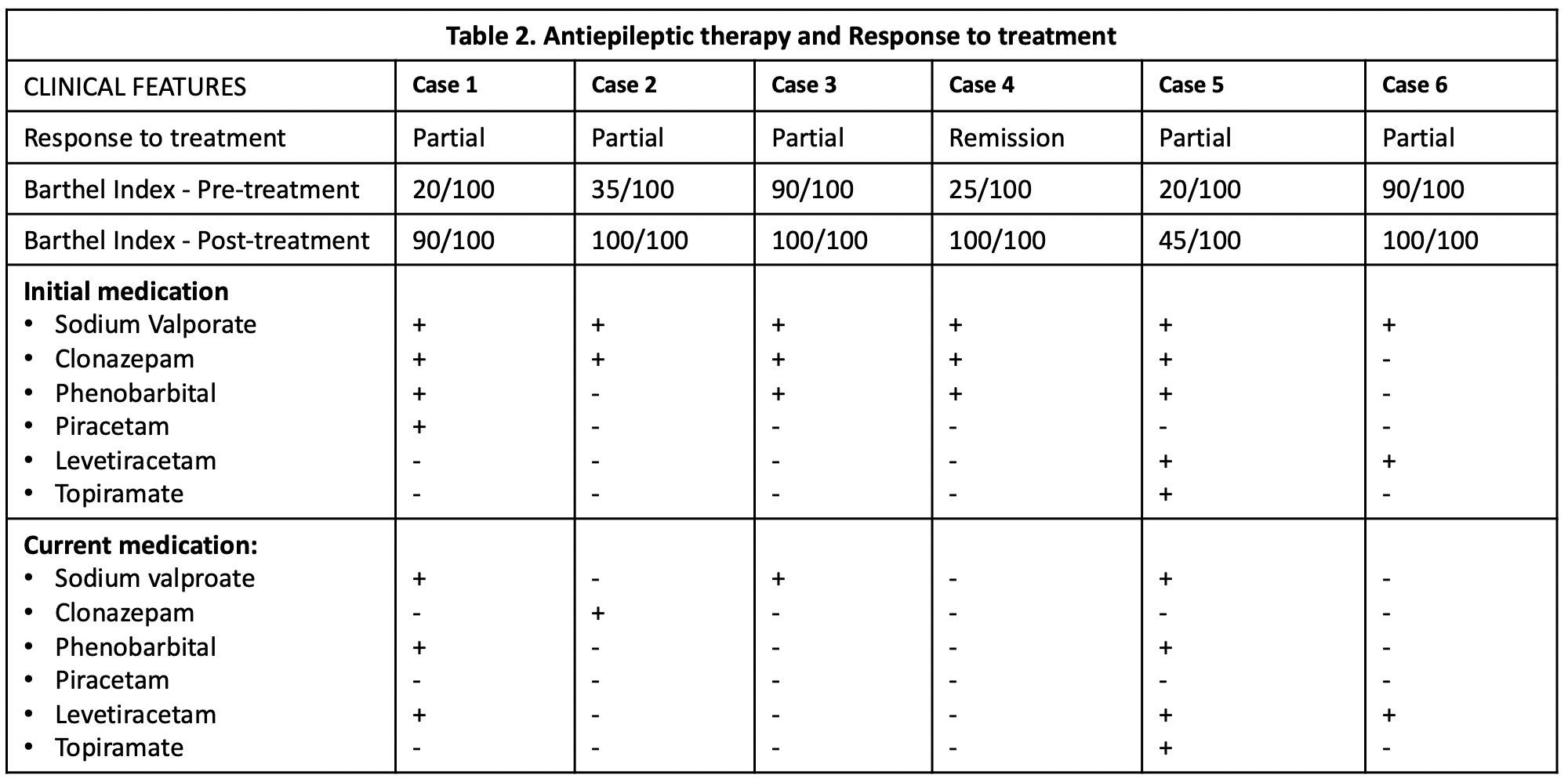Category: Myoclonus
Objective: To describe the clinical presentation and response to treatment of cases of Lance-Adams Syndrome in a Movement Disorders Clinic in El Salvador.
Background: Lance-Adams Syndrome is a chronic post-hypoxic myoclonus, it is a rare entity and a disabling complication with onset from days to weeks after a hypoxic brain injury. Spontaneous, action and reflex myoclonus are typically multifocal and may be accompanied by “bouncy gait”.
Method: We analyzed consecutive adult subjects referred to a movement disorder clinic from 1991 to 2020, all of them assessed by a movement disorder specialist, with video recording, Barthel Index scale and response to treatment.
Results: Six women had clinical presentation consistent with Lance-Adams Syndrome, with an average follow-up of 15 years (5-29 years). After starting monotherapy treatment and then polytherapy, all the patients presented progressive improvement of their symptoms, although in the following years, a reduction in the dose and number of medications was made. One patient presented complete remission of symptoms even after stopping medications. (Table 1 and Table 2).
Conclusion: Although Lance-Adams Syndrome is a non-epileptic condition, some antiepileptic medications are a relatively effective treatment. Early recognition and accurate diagnosis are important factors to decide the most effective intervention and to regain independence in activities of daily living.
To cite this abstract in AMA style:
J. Lopez-Castellanos, J. Lopez-Contreras. Lance-Adams Syndrome: A case series in El Salvador [abstract]. Mov Disord. 2021; 36 (suppl 1). https://www.mdsabstracts.org/abstract/lance-adams-syndrome-a-case-series-in-el-salvador/. Accessed April 21, 2025.« Back to MDS Virtual Congress 2021
MDS Abstracts - https://www.mdsabstracts.org/abstract/lance-adams-syndrome-a-case-series-in-el-salvador/


